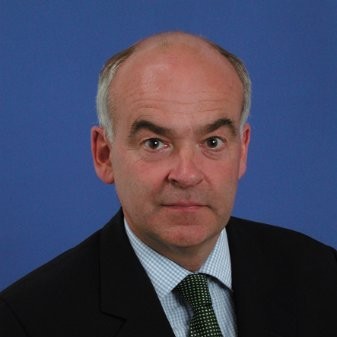Alumni Engagement Ideas To Drive Value For Your Professional Services Business
15 alumni engagement ideas that help teams ensure their community is ready to serve the needs of the business when needed.
Read more
The former Managing Director in Citibank’s Corporate and Investment Bank shares his experiences building the company’s EMEA alumni program.

In my first two articles, I promoted the reasons for hosting alumni programs and some ways to maximise their success through best approaches to setting-up and running them. As an Alumni Director and former banker myself, I started from the standpoint of the benefits to the sponsor in terms of recruitment, business generation and advocacy. Now let’s move to the flip-side and see what’s in it for the alumni themselves.
Having been involved since inception, I thought it might help to share what Citi’s alumni were repeatedly telling us they appreciated and wanted most in return for their loyalty and time vested in joining and then staying part of the program. Ideally, you need to fathom that out up-front, which means asking them in the first place. Then you have to meet their myriad of requests and aspirations, through constant improvements and tweaking of the program.
We ran two “Voice of Alumni” surveys in the first five years and over 3,000 alumni replied each time. That level of response positively surprised even ourselves and what it showed was just how supportive our alumni were and how keen they were to influence the direction we took the program. 95% of alumni felt it was great that we were “reconnecting” and their granular feedback then offered us the chance to ascertain the specific benefits they hoped to get from it.
By far the most welcomed and sought-after benefit was network and community. No surprises there. That’s something on which we’ve probably all come to place greater reliance recently, given lockdowns and remote working. The number one reason for joining was to “stay in touch”. Particularly with a familiar network, offering a safe and trusted space to communicate and meet others of similar shared experience. 98% of responders prioritised reconnecting with former colleagues, past and present and most wanted to do that through attending alumni events (86%). So our mantra was “once Citi, always Citi” and the more the network could be portrayed as an extension to family and friends, the better.
Next came the quality and offerings of the program itself. Inevitably (for Citi) these included benefits such as invitations to in-person alumni events (I already highlighted that we hosted 145 of these across EMEA in the first five years) and tickets to other Citi sponsored events, conferences, museums and art exhibitions. Plus access to Citi products such as advisory services, mortgages and credit cards. Finally, news of job vacancies and participation in training programs. I won’t spend too much more time on these “hand-outs” as they must be more or less universal, excepting some variances based on sponsor, sector or size.
Next was a strong push from alumni for the best platform and website with which to do this. These need to be intuitive and easy to access and use. To provide as many benefits as possible under one portal. To provide alumni with search directories, human interest stories and Citi news updates. In short, anything that makes them feel as if they’re being taken “behind the curtain” and kept more in touch with their former employer than was possible through the press or quarterly statements.
But one word of warning. While sponsors should seek as much information as they can get from alumni when they sign-up, don’t make your application forms too lengthy or detailed. There’s a direct correlation between time spent signing-up and drop-out rates. Not to mention the impact that perceived hassles may have on the likelihood of alumni encouraging their peers to sign-up too. Keep it short and simple.
What sometimes gets missed in all these offerings is the keenness of alumni for “putting back”. As with most well-meaning communities, where goodwill and personal branding exists, there will almost certainly be alumni who want to use the program to find ways to actively help-out. All you need to do is wind them up and point them in the right direction.
Volunteering opportunities proved particularly appealing to the alumni cohort entering retirement or part-time work, keen to stay occupied and perform pro-bono roles. They have time on their side and it was sweat equity, experience and skill-sets that they wanted to contribute, rather than reaching for their wallets. Providing for these well-meaning intentions can work positively in both directions and can be tapped in ingenious ways.
It can be done via external charities supported and arranged through the sponsor or directly for the sponsor itself. We found success with both. We volunteered alumni to organisations such as UK Career Academy Foundations (15 mentors were recruited from our alumnus in London) and Junior Achievement-Young Enterprise and we also had alumni who preferred to help the next generation of Citi bankers themselves directly.
One obvious way was inviting alumni to join Citi’s community action days but this was perhaps the least successful. Many alumni were already playing their parts and normally in communities closer to home. Much of this was also relatively menial and dare I say it, social media driven. So we had a better strike rate and more valued and bespoke contributions with mentoring and coaching.
Senior alumni are not shy of offering their views (particularly around career advice for women) and thankfully, they’re genuinely keen to pass them on. So all but one of the first batch of outside speakers we used in our “Proud 2B a Banker” series came from distinguished alumni, including the former President of Pakistan and Chairman of Marks & Spencer.
Over 200 alumnae also helped us with a senior attrition study (questionnaire and CEO reception for respondents) to ascertain and resolve why we were (then) losing too many mid-career female VPs and above. The feel good factor that came from being listened to and improving the process for others left behind was constantly welcomed. It worked in both directions.
Another surprisingly successful initiative was to bring together NEDs from our female alumni network and at least a dozen of Citi’s own female MDs. Described by the Citi bankers as “by far the best two hours they’d spent on career development in years” both groups widened their networks and helped each other with referrals. Who doesn’t want to improve the experience for their next generation?
On recruiting, our “Back on the Career Track”, “Career Relaunch” and “First Look at Citi” programs appealed enormously to alumni who regularly contributed 20% of attendees or respondents. Then there was the chance to opportunistically offer stretch assignments to our more senior alumni through being added to candidacy slates for Citi’s local regulated subsidiary boards. That effort met with such success that 38 alumni were appointed to Citi NED positions around the globe quite quickly.
In aggregate, around 3/4 of alumni found Citi to be either an extremely (or very) favourable employer and the same number confirmed they would consider returning (potential “boomerangs”). 95% were also either very or somewhat likely to recommend Citi as an employer to others who would likely suit the culture. Therefore not surprising that staying close to HR offerings ranked very highly up the list of what alumni felt the program could bring them. I’m sure the same positivity exists elsewhere.
In conclusion, none of our successes are meant to be remotely self-serving or congratulatory. We learnt through trial and error, which inevitably meant there were some struggles and disappointments along the way. But any sponsor (from whatever sector and with whatever budget) should be able to meet most of its alumni needs, if they first listen and then tailor their alumni offerings, accordingly. What I hope to have shared is some of the more inventive ways of making that happen. Of maximising your alumni benefits while never forgetting that first and foremost, alumni want to have fun and progress their professional and personal wellness along the way!
Part 5: What is the Alumni Member Experience?
Richard is the former Managing Director in Citibank’s Corporate and Investment Bank and Alumni Director responsible for successfully building its EMEA alumni program, at the personal request of CEO post-2012. Chief of Staff to two Vice Chairmen (former Dutch Minister of Finance and former Director General of the WTO) plus secretariat to several Advisory Boards, most recently at London Stock Exchange. Former MNTD of Citibank’s UK Pension Fund, Fellow of the Royal Geographic Society and Graduate of Cambridge University onto whose Alumni Advisory Board he has also recently been appointed.
NEWSLETTER


15 alumni engagement ideas that help teams ensure their community is ready to serve the needs of the business when needed.
Read moreJuly 1, 2025
One of the biggest challenges when building a virtual alumni network is keeping your alumni consistently engaged. Here are six engagement ideas.
Read moreJune 18, 2025
The secret to a successful alumni program is engagement. We've compiled the best corporate alumni engagement strategies that are proven to be...
Read moreJune 6, 2025
Build new revenue streams, save on recruitment and enhance your employer brand, all through the power of alumni.